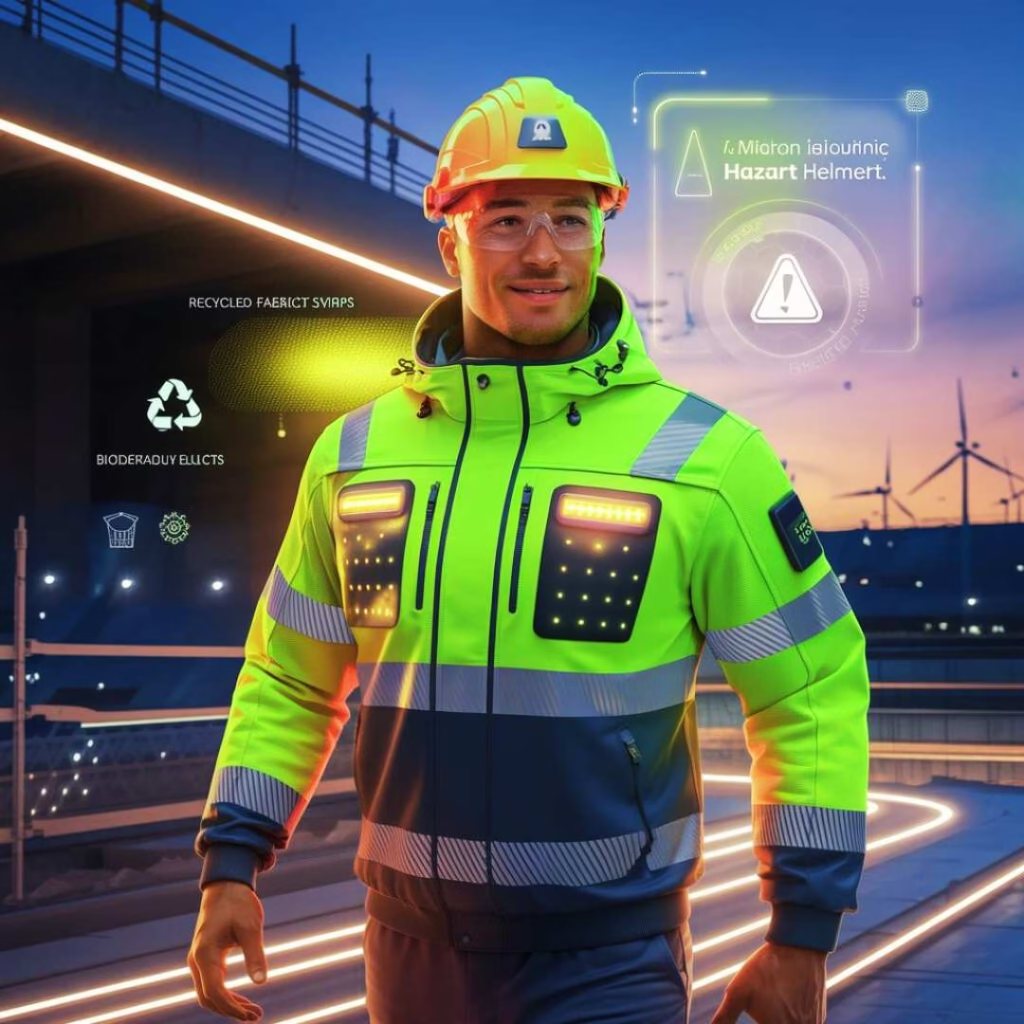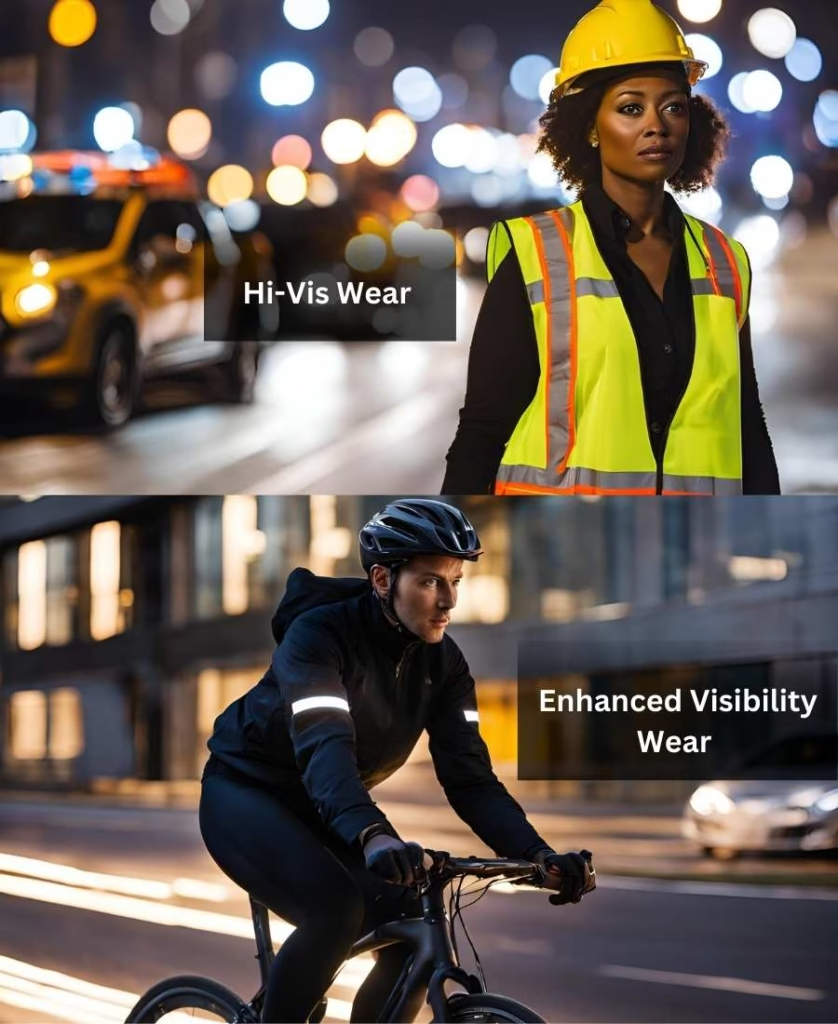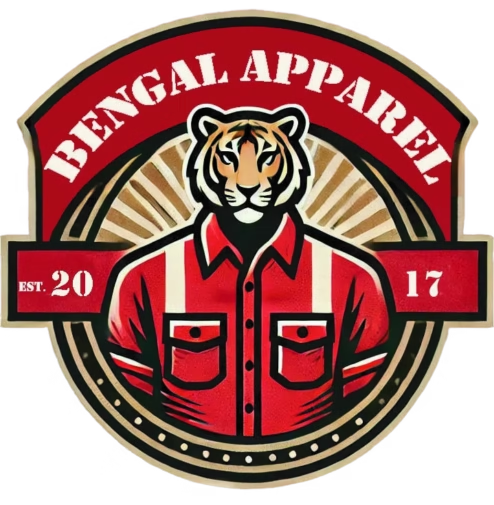High-visibility (hi-vis) clothing has long been a cornerstone of workplace safety, protecting workers in construction, road maintenance, and emergency services. But in 2023, the industry is undergoing a revolution. No longer just fluorescent vests and bulky jackets, today’s hi-vis gear combines advanced safety technology with stylish, ergonomic designs. From solar-powered LED strips to eco-friendly reflective fabrics, innovations in high-visibility clothing are redefining what it means to stay safe—and look good—on the job.
This blog explores the groundbreaking advancements shaping the future of hi-vis apparel, proving that safety and style can coexist seamlessly.
1. Smarter Fabrics: Beyond Fluorescent Colors
Traditional hi-vis clothing relies on fluorescent colors (neon yellow, orange) and retroreflective tape. But 2023 has introduced fabrics that are as intelligent as they are visible.
- Photoluminescent Technology
- How It Works: Fabrics embedded with photoluminescent pigments absorb light during the day and glow for up to 10 hours in the dark.
- Example: ProViz’s Reflect360 cycling jacket uses this tech, eliminating the need for external light sources to stay visible.
- Benefit: Ideal for nightshift workers and cyclists, offering continuous visibility without batteries.
- Dynamic Color-Shifting Materials
- Innovation: Researchers at MIT developed textiles that change color based on environmental conditions (e.g., brighter in fog, darker in sunlight).
- Application: Prototypes are being tested in aviation and firefighting gear.
- Lightweight, Breathable Reflective Fabrics
- Trend: Brands like 3M and Reflective Apparel now offer ultra-thin, moisture-wicking reflective materials that replace bulky tape.
- Impact: Workers in hot climates stay cool without compromising safety.
2. Tech-Integrated Hi-Vis Gear: Wearables Meet Safety
The rise of IoT (Internet of Things) and wearable tech has transformed hi-vis clothing into smart safety systems.
- Solar-Powered LED Lighting
- Example: The Bolt UV Jacket by Vollebak integrates flexible solar panels into its design, powering LED strips for 24/7 visibility.
- Benefit: Reduces reliance on disposable batteries and enhances visibility in low-light conditions.
- Biometric Monitoring
- Innovation: Hi-vis vests with embedded sensors track vital signs (heart rate, body temperature) and alert supervisors to fatigue or heat stress.
- Case Study: Siemens’ Smart Vest for factory workers reduced heat-related incidents by 40% in pilot programs.
- GPS and Connectivity
- Feature: Construction helmets with GPS trackers ensure worker location visibility in remote sites.
- Brand Spotlight: Daqri’s smart helmets combine AR (augmented reality) and GPS for real-time hazard alerts.

3. Sustainable Hi-Vis: Eco-Friendly Safety Solutions
With 67% of consumers prioritizing sustainable brands (McKinsey, 2024), the hi-vis industry is embracing green innovations.
- Recycled Reflective Materials
- Breakthrough: Companies like Patagonia and Helly Hansen use recycled polyester blended with reflective fibers.
- Stat: Recycled fabrics reduce carbon footprints by up to 30% compared to virgin materials.
- Biodegradable Hi-Vis Gear
- Example: EcoGlo by Nasco Industries offers biodegradable safety vests made from plant-based polymers.
- Lifespan: Decomposes within 5 years vs. 200+ years for traditional plastics.
- Low-Impact Dyeing
- Trend: Waterless dyeing techniques (e.g., CO2 dyeing) cut water usage by 95% in hi-vis apparel production.
4. Fashion-Forward Designs: Style Meets Compliance
Gone are the boxy, neon-orange vests. Today’s hi-vis clothing merges OSHA compliance with runway-ready aesthetics.
- Slim-Fit and Tailored Cuts
- Brand Spotlight: Dickies’ Flex Workwear Line offers tapered hi-vis pants and jackets for a modern, professional look.
- Streetwear-Inspired Collections
- Trend: Collaborations between safety brands and fashion labels (e.g., Carhartt x Nike) blend reflective elements with urban style.
- Customizable Branding
- Feature: Reflective logos and embroidery allow companies to promote their brand while ensuring visibility.

5. Industry-Specific Innovations in High-Visibility Clothing
- Construction & Roadwork
- Smart Helmets: Integrated face shields with heads-up displays (HUDs) project hazard warnings.
- Heated Hi-Vis Jackets: Battery-powered heating elements keep workers warm in freezing conditions.
- Cycling & Outdoor Sports
- Product Highlight: Proviz’s Reflect360 Backpack Cover turns any bag into a hi-vis safety accessory.
- Emergency Services
- Innovation: Firefighter gear with thermal-reflective coatings that repel heat up to 1,000°F.
6. The Future: What’s Next for Hi-Vis Clothing?
- Self-Repairing Fabrics: MIT’s lab is testing materials that “heal” minor tears, extending garment lifespan.
- AI-Driven Design: Algorithms predict optimal reflective patterns based on accident data.
- Holographic Reflective Tech: 3M’s Diamond Grade sheeting uses prismatic reflectors for 500% brighter visibility.
Safety Never Looked So Good
Finally, the innovations in high-visibility clothing in 2025 prove that safety gear no longer needs to sacrifice style for functionality. With advancements in smart technology, sustainable materials, and sleek designs, workers can stay protected while feeling confident and comfortable.
For businesses, investing in modern hi-vis solutions isn’t just about compliance—it’s about valuing your team’s well-being and projecting a forward-thinking brand image.




